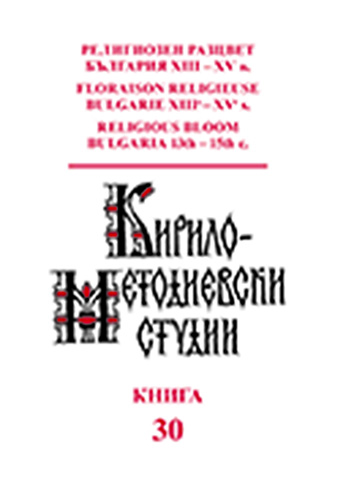Les moines originaires de Bulgarie installés en Serbie au XIVe siècle
Bulgarian monks in Serbia in the 14th century
Author(s): Jonel HedjanSubject(s): Language studies, Language and Literature Studies
Published by: Кирило-Методиевски научен център при Българска академия на науките
Keywords: Monks; Hesychasm; Jefrem; Romilo.
Summary/Abstract: In the fourteenth-century-Balkans, a period of uncertainty began with the two civil wars in Byzantium, and was accentuated by the arrival of the Turks on the peninsula. All of this had consequences on the life of the monks and in particular that of the hermits. Many of them sought a region that could offer them a relative security, outside Mount Athos that kept its considerable importance. The Serbian lands, less exposed during the first few decades to the attacks of the Turks, thus welcomed Bulgarian and Greek monks who came to settle there. They participated in the introduction of hesychasm, which in return contributed to a rapprochement of the Serbian church with the patriarchate of Constantinople. The historic circumstances put some of these monks in the front of the scene as they played an important role in the events that occurred during this period, e.g. Jefrem, or were held in high esteem by the local lords because of their spiritual authority, e.g. Romilo. Either way, these Bulgarian hesychast monks contributed to the formation of a common feeling of belonging to orthodoxy, thus allowing the overcoming of the identity distinction, which ultimately contributed to the election of a Bulgarian hesychast as the head of the Serbian Church in 1375.
Journal: Кирило-Методиевски студии
- Issue Year: 2021
- Issue No: 30
- Page Range: 79-93
- Page Count: 15
- Language: French

